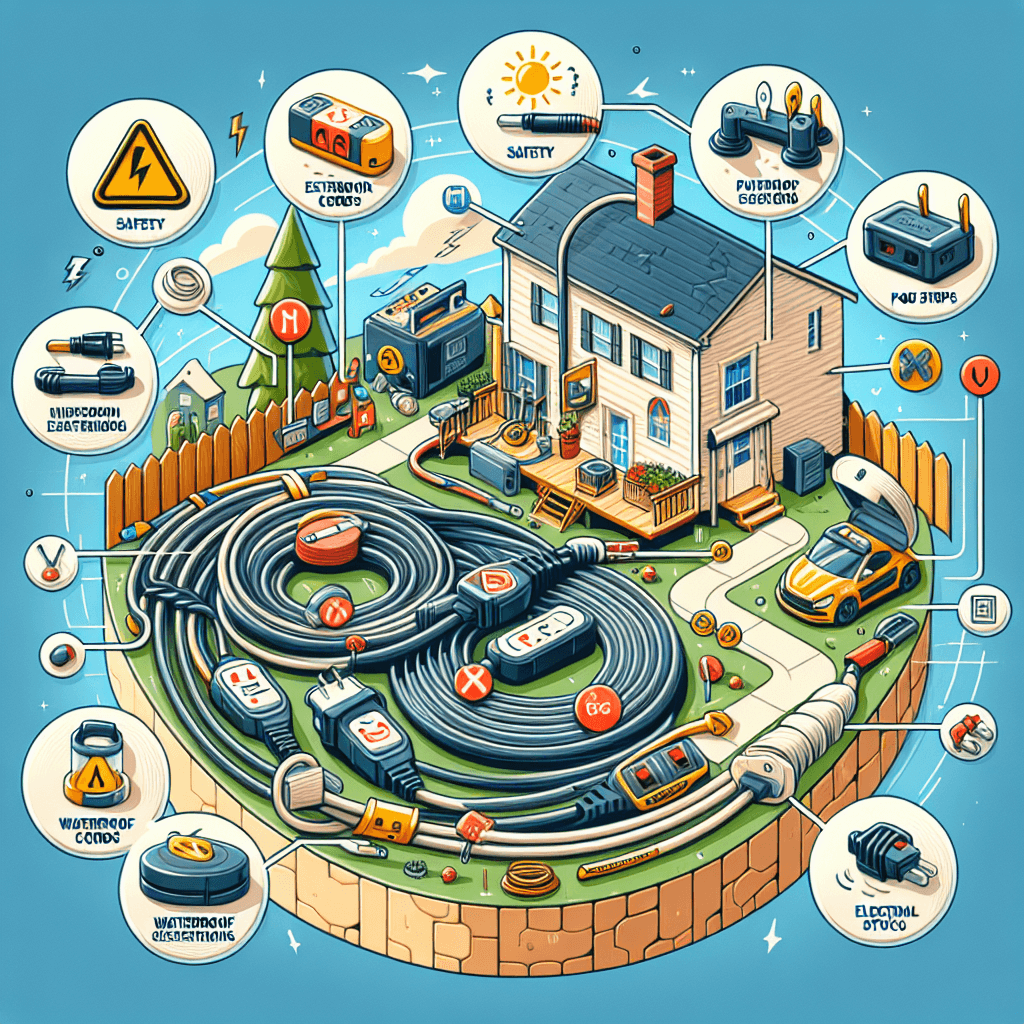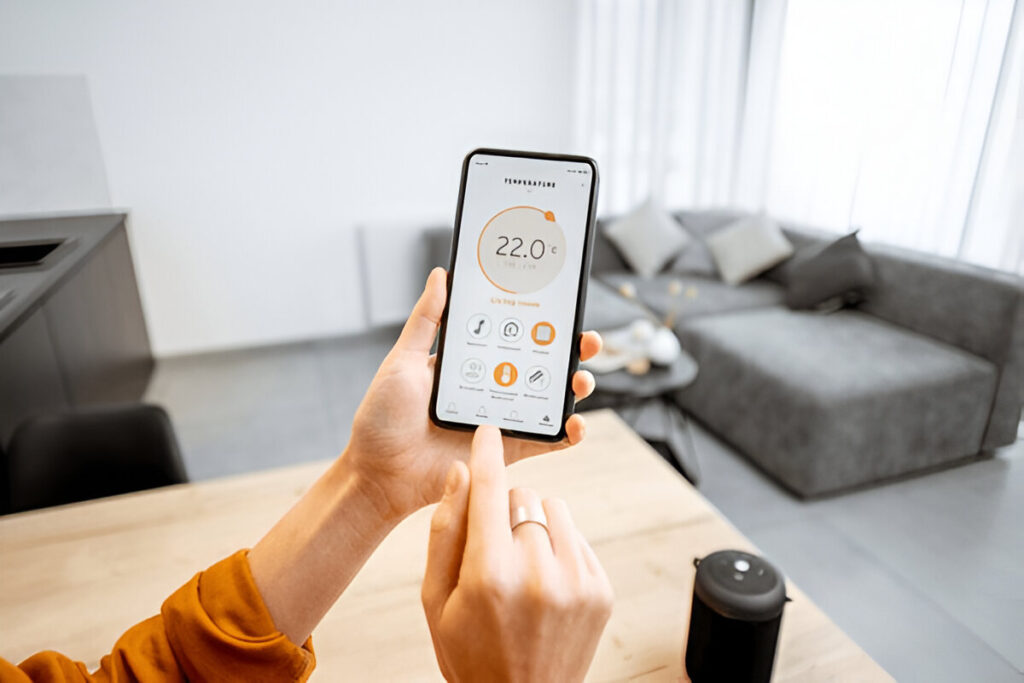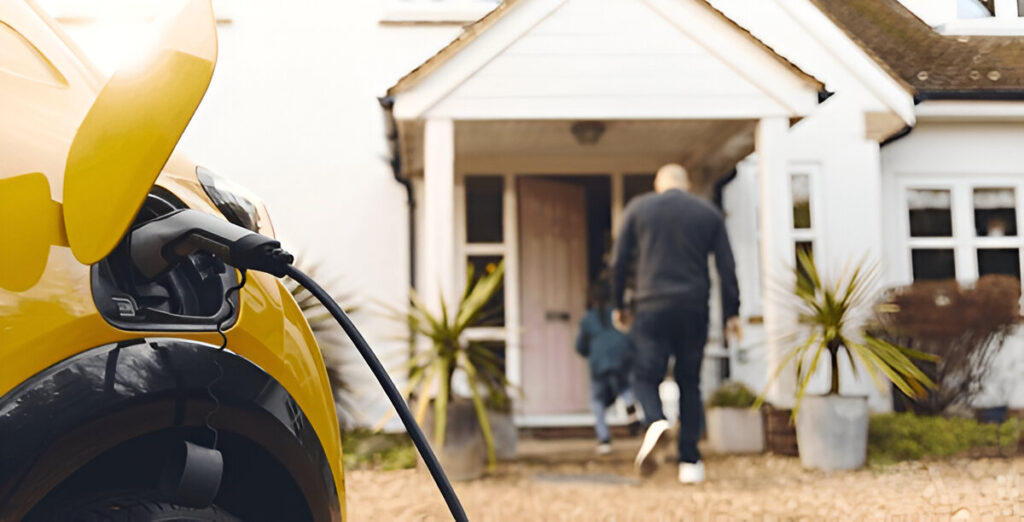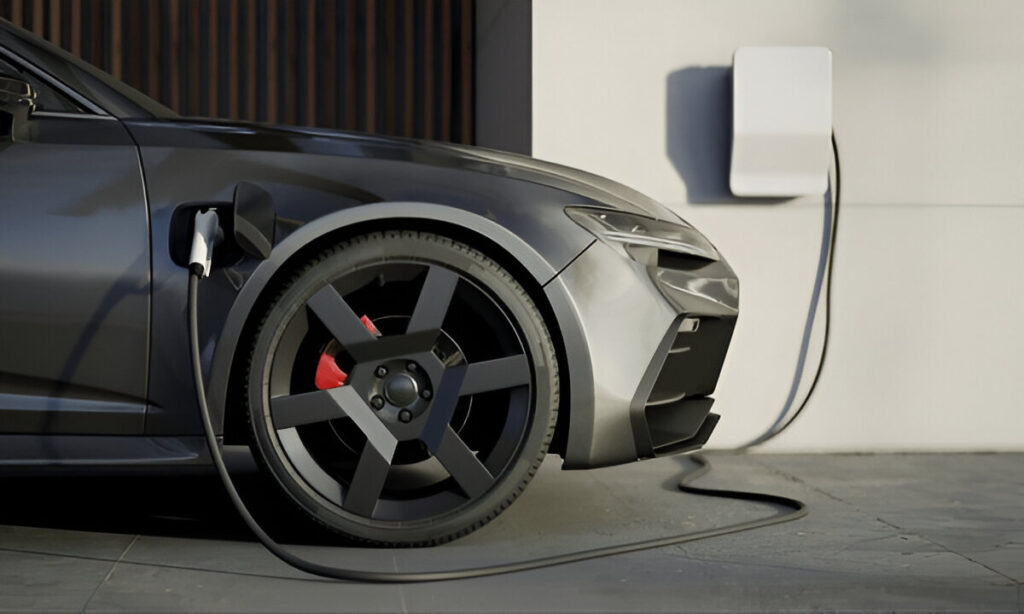Outdoor extension cords and power strips are incredibly helpful when you need to power devices outside—whether it’s for garden equipment, holiday lights, or other outdoor activities. But using them incorrectly can lead to electrical hazards, such as shocks, fires, or even damage to your electrical devices. Let’s take a look at how to safely use outdoor extension cords and power strips, and why installing cable systems electrical might be a safer long-term solution for your outdoor power needs with our install cable systems electrical service.
1. Pick the Right Extension Cord for Outdoors
It’s important to remember that not all extension cords are suitable for outdoor use. Outdoor-rated extension cords are made to withstand things like moisture, UV rays, and extreme temperatures. When selecting an extension cord, always make sure it’s clearly labeled for outdoor use.
You should also ensure that the extension cord can handle the wattage and voltage of the devices you’re connecting. Overloading a cord can lead to overheating, which is a fire risk. For more extensive outdoor setups, installing cable systems electrical can provide a more permanent, safer option for your power needs.
2. Don’t Overload Power Strips
Power strips are great for expanding your electrical options, but it’s important not to overload them. Check the power strip’s maximum capacity (either in wattage or amperage) before you plug anything in. If you’re using high-powered devices, like a ceiling fan installation near me or outdoor lights, consider a more permanent solution like install cable systems electrical that can handle the load.
Also, be sure that the power strip you’re using is rated for outdoor use. Overloading or using an indoor-rated strip outside can increase the risk of fire. If you’re worried about the safety of your electrical setup, calling commercial electricians can help you get the proper system in place.
3. Check for Damage Before Use
Before plugging in your outdoor extension cords and power strips, inspect them thoroughly for any signs of damage. Look for exposed wires, fraying, or cracks in the insulation. Using damaged cords or power strips can lead to serious safety issues, like electrical shocks or fires.
If you find any damage, replace the cord immediately. For peace of mind, you can use electrical testers for breakers and non-energized outlets to check the integrity of your outlets before connecting anything. For a more permanent and secure solution, consider install cable systems electrical that are built to last and withstand outdoor conditions.
4. Keep Cords Dry and Off the Ground
One of the easiest ways to extend the life of your extension cords and power strips is to keep them off the ground. If your cords are exposed to moisture, they can become damaged or even short-circuit. To avoid this, try to elevate your cords and ensure they stay dry when not in use.
If you’re using cords around areas with frequent water exposure, like pools or gardens, it’s a good idea to install outdoor GFCI outlets. These outlets protect you from electrical shocks by automatically shutting off the power if they detect a fault. To avoid having to rely on extension cords altogether, installing cable systems electrical is a much safer and permanent solution.
5. Never Daisy Chain Power Strips
While it might be tempting to plug one power strip into another (a process called daisy chaining), this is incredibly dangerous and should be avoided. Daisy-chaining can overload the power strips, increasing the risk of overheating and fire. Always use power strips according to the manufacturer’s instructions and avoid chaining them together.
If you need more outlets for your outdoor setup, it’s best to install cable systems electrical, which can handle the electrical needs without relying on multiple power strips. A commercial electrical contractor can help design a system that works safely and efficiently.
6. Unplug When Not in Use
When you’re done using your outdoor electrical equipment, be sure to unplug everything. Keeping cords plugged in when they’re not in use can lead to wear and tear, and it can increase the risk of overheating and fire.
For long-term solutions, you can upgrade your electrical panel to accommodate more outlets or circuits for outdoor use. This will give you more reliable and safer power sources without needing to rely on extension cords.
7. Install Weather-Proof Outdoor Electrical Outlets
If you use outdoor electrical devices frequently, consider installing weatherproof outlets. These outlets are specially designed to handle the elements and provide a safer solution than relying on cords and power strips. Outdoor electrical outlets will ensure your devices stay safe from the weather.
For a more permanent solution, installing cable systems electrical can provide reliable power for your outdoor spaces without the constant need for extension cords. A professional commercial electrician can help ensure the installation is done correctly and safely.
Conclusion
While outdoor extension cords and power strips are useful, it’s important to use them safely. Always choose the right cord, inspect it for damage, avoid overloading power strips, and unplug everything when not in use. If you want a safer, more reliable long-term solution, installing cable systems electrical is the way to go.
For professional help with your outdoor electrical setup or any safety concerns, commercial electricians can help you with installation and upgrades. Don’t hesitate to contact a professional today to keep your outdoor electrical system safe and functional.





